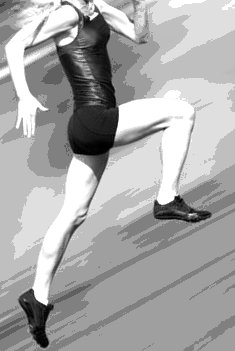Sprinting studied for cell health
 Research from the US says the benefits of high intensity interval training (HIIT) reach right down to the cells.
Research from the US says the benefits of high intensity interval training (HIIT) reach right down to the cells.
High-intensity interval training in aerobic exercises such as biking and walking appears to cause cells to make more proteins for their energy-producing mitochondria and their protein-building ribosomes, stopping aging at the cellular level.
“Based on everything we know, there's no substitute for these exercise programs when it comes to delaying the aging process... these things we are seeing cannot be done by any medicine,” said Dr Sreekumaran Nair, a researcher at the Mayo Clinic in the USA.
The study involved 36 men and 36 women split into two age groups, doing three kinds of exercise - high-intensity interval biking, strength training with weights, and combined strength training and interval training.
Researchers took biopsies from the volunteers' thigh muscles and compared the molecular makeup of their muscle cells to samples from sedentary volunteers.
The researchers also assessed the volunteers' amount of lean muscle mass and insulin sensitivity.
They found that while strength training was effective at building muscle mass, high-intensity interval training yielded the biggest benefits at the cellular level.
The younger volunteers in the interval training group saw a 49 per cent increase in mitochondrial capacity, and the older volunteers saw an even more dramatic 69 per cent increase.
Interval training also improved volunteers' insulin sensitivity, which indicates a lower likelihood of developing diabetes.
However, interval training was less effective at improving muscle strength, which typically declines with aging.
“If people have to pick one exercise, I would recommend high-intensity interval training, but I think it would be more beneficial if they could do 3-4 days of interval training and then a couple days of strength training,” said Dr Nair.
Of course, any exercise was better than no exercise.
Exercise also appeared to boost the ribosomes' ability to build mitochondrial proteins and proteins responsible for muscle growth.
The most impressive finding was the increase in muscle protein content. In some cases, the high-intensity biking regimen actually seemed to reverse the age-related decline in mitochondrial function and proteins needed for muscle building.







 Print
Print